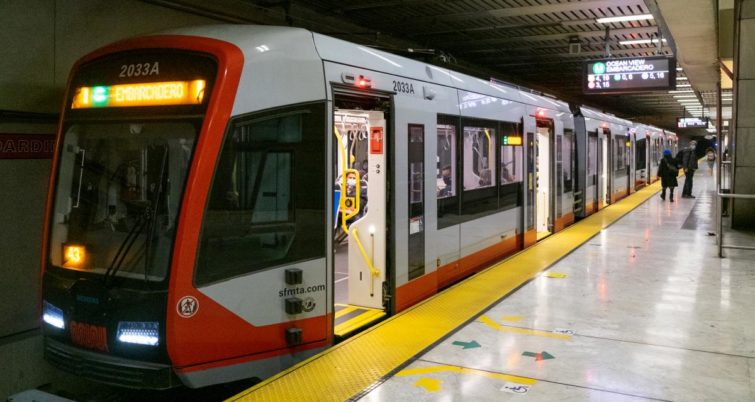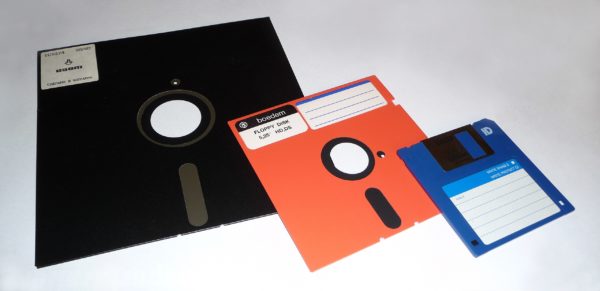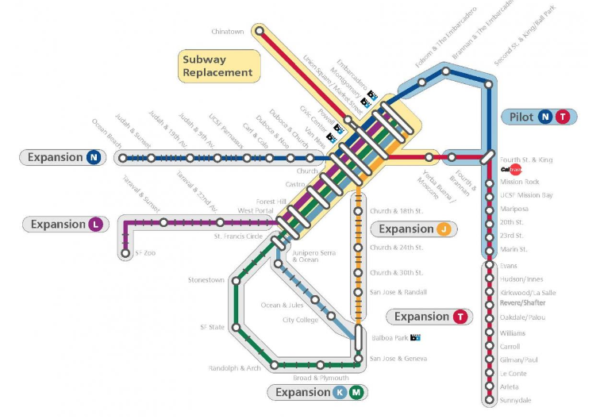SFMTA Train Traffic Control System Runs on Floppy Disks
Written by David C. Lester, Editor-in-Chief
SAN FRANCISCO –– The San Francisco Metropolitan Transportation Agency's train control system today uses a system that relies on 5 1/2-inch floppy disks –– the ones that are really floppy.
The ABC television network affiliate in San Francisco, Channel 7 News, reported this weekend that SFMTA’s train control system software and data still run on 5-1/2-inch floppy disks. This type of floppy disk is likely only remembered by people who have been around a while. The 5-1/2-inch floppy disk is truly floppy – meaning that it’s a piece of flexible, plastic-type material that is used to input software and data into a computer. It is stored in a protective sleeve to help keep fingerprints and dust off of it during handling.
This type of floppy disk was developed in the late 1970s and early 1980s and offered very little storage space. If you remember floppies at all, you’re more likely to remember the 3-1/2-inch floppies. While these disks contain essentially the same material as the larger ones, the material is encased in a hard plastic shell. Nevertheless, those were used primarily in the later 1980s and 1990s. Today, of course, we have internal and external hard drives that hold multiple terabytes (TB) of data.

The evolution of the floppy disk. The black floppy on the left is an 8-inch disk developed by IBM in 1967. The red floppy is a 5-1/2-inch disk (the kind used by SFMTA today) and the blue one is the last iteration of the floppy, which is encased in a hard shell.
In the computer age, it has not been uncommon for industrial users of systems to use an aging or obsolete technology because it still works, maintenance costs remained reasonable, and the investment in a replacement system requires lots of dollars, training time and costs, and significant amounts of testing. We’ve all heard of banks using large mainframe computers running a legacy language called “Common Business-Oriented Language” (COBOL). Some still use this technology today. The mainframe hardware is usually well-built and COBOL is a mature programming language, but COBOL’s capabilities tend to focus on transaction processing rather than the complexity of tasks assigned to much of today’s complex software and hardware.
SFMTA realizes that its train control system is in serious need of an upgrade, and the yellow lines in the system map below represent the portion of the system operated via floppy disks.

Map courtesy of SFMTA
The agency even has a backgrounder on its website which says “Today, Muni Metro runs on an Automatic Train Control System that was installed in the Market Street subway in 1998, and still runs on floppy disks. Some of its parts are no longer available. For this reason alone, it’s vital that we replace the existing system.” The agency is concerned that the programs and data contained on the disks could degrade over time. According to the Channel 7 report, “‘SFMTA’s director Jeffrey Tumlin said upgrading the system will take another decade and cost hundreds of millions of dollars.'” Channel 7 goes on to quote Tumlin saying “‘It’s a question of risk. The system is currently working just fine but we know that with each increasing year risk of data degradation on the floppy disks increases and that at some point there will be a catastrophic failure.'”
Channel 7 also reported that Tumlin said “‘The detail project schedule will be finalized once we have a contractor onboard. This is effectively a multi-phase decade long project that starts with pieces of market street subway and pieces in the surface. Ultimately our goal is to have a single train control system for the entire rail system.'”





